Reduction of Food Loss
Basic Policy
Since our founding, “not wasting any food ingredients " has been well established as a guideline. We have been recycling the beef tallow generated when making Gyudon at Yoshinoya since the 1970s. In addition to this guideline, we view it as our social responsibility as a company involved in food to reduce the volume of food waste that ends up in landfill. We have set the reduction of food loss as a materiality KPI, and are continuing to pursue a host of initiatives to reduce the impact on the global environment group-wide.

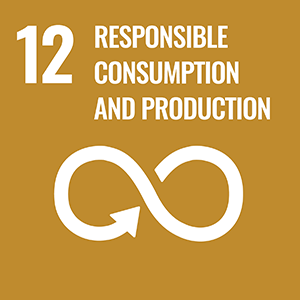
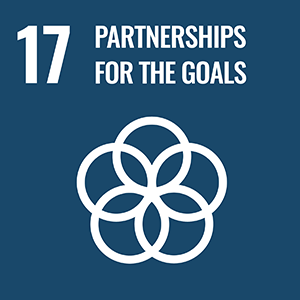
| Risks | Opportunities |
|---|---|
|
|
KPI
| KPI setting | FY2023 result | FY2024 result | FY2027 target | FY2029 target |
|---|---|---|---|---|
| Recycling of waste discharged from plants in Japan* |
53% | 62% | 55% | 56% |
This is the recycling rate at the Yoshinoya and Hanamaru's eight factories in Japan.
Examples of Activities
Seven Factories in Japan
- The recycling rate for food waste generated at factories is 100% from FY2023 onwards.
| FY2020 | 90.3% |
|---|---|
| FY2021 | 92.2% |
| FY2023 | 99.9% |
| FY2024 | 100.0% |
| FY2024 | 100.0% |
Yoshinoya Initiatives
Tokyo Factory
- We sell the trimmings from meat processing centers to other companies as raw material for hamburger meat.
- We use the off-spec scraps generated at vegetable processing centers to make Yoshinoya sauce as well as the soup stock for Sundubu, or Korean-style tofu stew, at Karubi no Toriko.
- Since 2023, we have been upcycling the onion scraps previously deemed off-spec at our Tokyo Factory by drying and using them as an edible powder. Moreover, from February 2024, we introduced a superheated steam dryer developed by ASTRA FOOD PLAN Co., Ltd. at our Tokyo Factory, which instantly sterilizes, dries, and powders food. We are making effective use of the output as a food material ingredient while retaining the flavor and minimizing the loss of nutritional value. This measure has been praised by the food service industry for reducing food loss.
【Upcycling of off-spec onion scraps to prevent waste of all Gyudon ingredients】
Kyoto Factory
- We are working on a recycling-based upcycling project in which we ferment scraps from vegetables such as onions and cabbage generated during processing in our own fields to create high-quality compost soil, and then process and commercialize the vegetables grown in that soil.
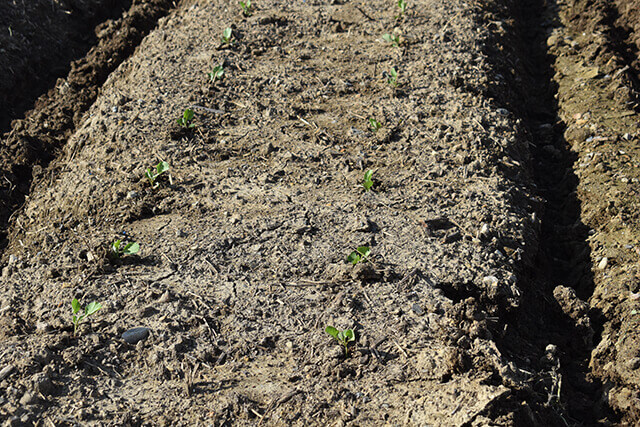
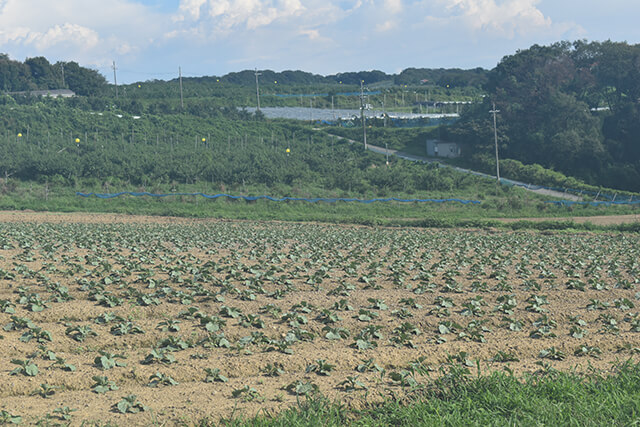
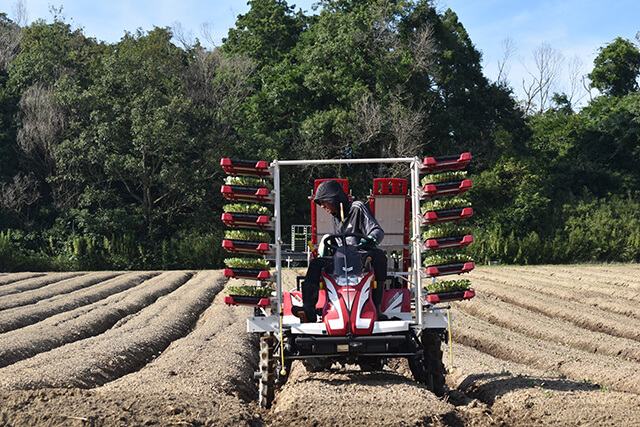
Yoshinoya Restaurants
- Yoshinoya views the volume of food left over by customers in its restaurants as an indicator of how satisfied customers are, and is working to reduce this amount. At all of our restaurants, we record and analyze leftover food from both quantitative and qualitative perspectives. The response of the head office when an abnormal value is detected is to relate it to flavor fluctuations and revise kitchen operations to standardize the flavor, which ultimately should result in eliminating leftover food. Leftover food and kitchen waste from each restaurant are recycled into animal feed or fertilizer.
- We use data to forecast the number of restaurant visitors and link this to the timing of cooking the beef. This aids us in cooking and managing food ingredients properly. The system where food is prepared after an order is received offers both the advantage of the provision of freshly made food and higher quality and not generating waste.
- Since 1976, all restaurants—other than those on remote islands—have been recycling 100% of the beef tallow generated during the Gyudon cooking process by converting it into oil and fat products. Once the beef tallow is collected from each restaurant, it is taken to a distribution center and then sold as feed, fatty acids, product ingredients, and fuel for power generation by oil and fat companies to feed and chemical factories and manufacturers.
Food Waste Recycling Rate (Yoshinoya Overall)
| FY2020 | 74.0% |
|---|---|
| FY2021 | 74.4% |
| FY2023 | 83.7% |
| FY2024 | 83.8% |
| FY2024 | 77.4% |
Number of Cans of Beef Tallow Oil Shipped (All Yoshinoya Restaurants)
| FY2020 | 5,751tons 383,400cans |
|---|---|
| FY2021 | 5,591tons 372,706cans |
| FY2023 | 4,239tons 282,615cans |
| FY2024 | 3,767tons 251,167cans |
| FY2024 | 4,757tons 317,133cans |
Hanamaru Udon Initiatives
Kagawa Factory, Chiba Factory, Shizuoka Factory, Okinawa Factory, Hokkaido Factory
- We are using cutting-edge freezing technology to extend the shelf life of our udon noodles. This udon is sold from frozen food vending machines and is also provided to children's cafeterias.
- Since 2022, we have provided 40% of the waste udon from the Takamatsu Factory to Takamatsu City, and have been cooperating in experiments on biomass power generation using the gas produced from collected udon.
- We remove the salt content from raw waste udon generated at the Chiba, Shizuoka, Okinawa and Hokkaido factories and sell the udon as raw material for animal feed through recycling companies.
- We are conducting research on the upcycling of waste udon into alcohol.
Hanamaru Udon Restaurants
At Hanamaru restaurants, we aim for a 50% food recycling rate. Linking the data forecasting the number of restaurant visitors with the timing of boiling the noodles enables us to properly manage cooking and food ingredients. As part of our efforts to reduce waste, we are working to extend the holding time in the noodle-making process, and proceeding with the development of udon that stays delicious for longer after boiling.
Food Waste Recycling Rate (Hanamaru Udon Overall)
| FY2020 | 7.5% |
|---|---|
| FY2021 | 8.4% |
| FY2023 | 0.0% |
| FY2024 | 0.0% |
| FY2024 | 0.0% |
Number of Cans of Beef Tallow Oil Shipped (Hanamaru Udon Overall)
| FY2020 | 44.2% |
|---|---|
| FY2021 | 40.3% |
| FY2023 | 33.2% |
| FY2024 | 33.0% |
| FY2024 | 32.7% |
Volume of Waste Udon Noodles Provided by the Takamatsu Factory to Takamatsu City
| FY2023 | 2.5tons |
|---|---|
| FY2024 | 6.9tons |
| FY2024 | 7.0tons |
Takara Sangyo
For over a decade, we have been repurposing the sauce from simmered pork belly—which is full of meaty flavor that cannot be achieved with seasonings alone—and selling it as a sauce for tsukemen, or noodles served with dipping sauce, and for soy-marinated eggs. Furthermore, the leftover meat from making chashu (braised pork belly) is mixed with other meat and used to make pan-fried dumplings, steamed dumplings, jiang (Chinese-style fermented bean paste), minced meat with miso (fermented bean paste), and even soup stock. In recent years, this recycling process has resulted in eliminating meat waste. Waste noodles are also recycled as animal feed, fertilizer, and fuel.
Awards Received
In recognition of our upcycling of off-spec onion scraps that would otherwise be discarded during food processing, as well as the creation of a sustainable scheme that we have been implementing at the Tokyo Factory since 2022, we received the Parliamentary Vice-Minister of the Environment Award in the 2024 Food Loss and Waste Reduction Promotion Award, conducted by Japan's Ministry of the Environment and the Consumer Affairs Agency.